The AA-52 was adopted to replace the Chatellerault light machine gun in French military service in 1952. The AA52 is rather unusual in being a rifle-caliber (7.5×54 French, specifically) machine gun using a lever-delayed blowback action. The AA-52 was intended to serve as both a portable light machine gun and also a heavy mounted gun on vehicles with the use of a heavier barrel. It is belt fed and fires from an open bolt, with a cyclic rate of 700 rounds/minute. The chamber is fluted to ease extraction, which is a common concern on high-pressure blowback actions.
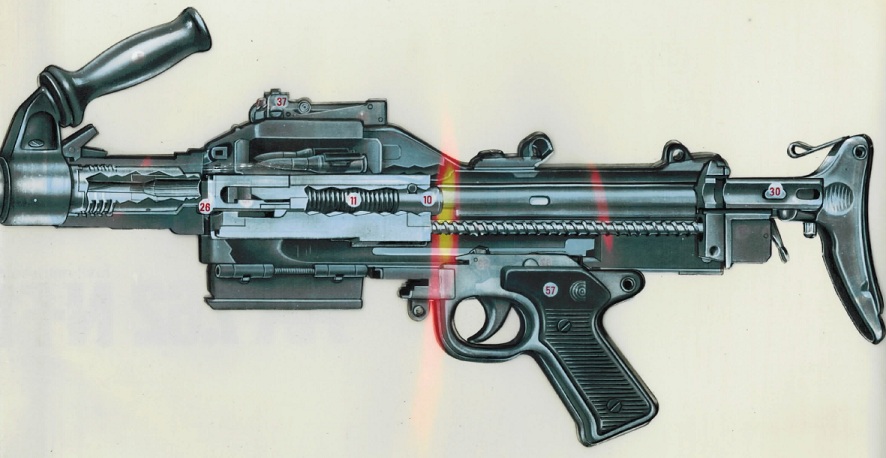
The AA-52 saw service in Indochina, Algeria, and the first Gulf War, although it has been since replaced by the FN Minimi and FN MAG (one for light use and one for heavy). There was also a variant of the AA-52 made in 7.62mm NATO, designated the AA 7.62 N-F1 (which fired slightly faster than the original, at 800 rpm). In addition to French service, the AA-52 was purchased and used by several African nations, including Cameroon, Congo, Cote d’Ivoire, Guinea, Morocco, Mauritania, Senegal, Chad and Togo.
We have copies of an original AA52 manual and a neat layered cutaway view booklet on the N-F1 version available for download here or on the AA-52 page in the Vault:
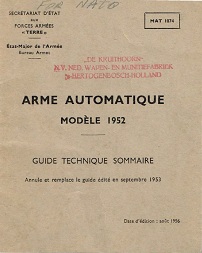
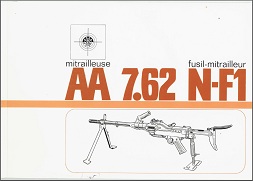

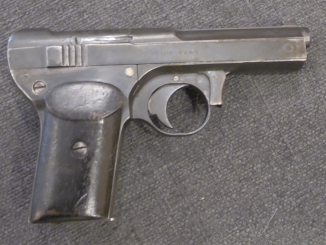
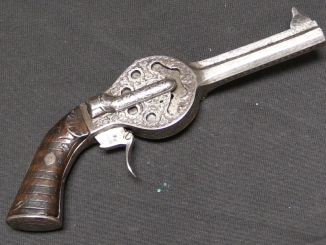
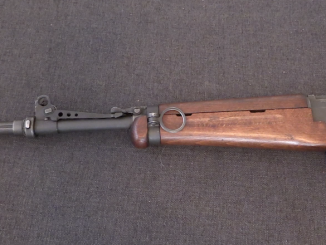
The AA52 drew heavily on the MG42 for design features.
A marked characteristic of the gun is that it’s action distorts and breaks cartridge cases – it was known in UK armament circles as “the case-wrecker”.
The AA-52 and the FAMAS both use the delayed blow-back action, so both of them do break brass cases and therefore the French use metal cases. Which apparently are bought from China.
Furthermore the AA-52 is still used in example as a mounted machine gun on vehicles.
What was it that wrecked cases?
“The chamber is fluted to ease extraction, which is a common concern on high-pressure blowback actions”
How could increasing the surface area (Fluting)of the chamber ease extraction? I thought the fluting was designed to cause more friction to aid in keeping the breach closed long enough for the pressure to drop to a safe level before opening up for extraction? HKish? 😉
Dean from Idaho
fluting directs gas between the chamber wall and the cartridge case to ease the extraction, because lever, and roller delayed breaches start to open under higher pressure than positive locked designs. Without it They tend to rip the base of the case off.
I am very confused. Lever and roller delayed actions open because of the case head pushing on the bolt. How would the case head be torn off? I have seen this happen in gas operated guns when the neck end gets stuck. I have next to no experience behind roller guns and none behind lever delays.
Is it just me, or does the FCG look like it came straight from an MG-42?
The fluting extends to the case mouth of the cartridge, allowing some of the propellant gas to leak around the sides of the case and “float” it out by equalizing the pressure inside and outside the case.
While it is true, as Mr. Freeman points out, that the case head pushes the bolt in a retarded blowback design rather than the case head being pulled by the bolt as in a gas or recoil design, it is still quite possible, even likely that the case head can fail in blowback designs.
The case head isn’t being pulled off by the extractor, it’s being blown off by the pressure inside the case. The force acting backwards against the case head vastly exceeds the yield strength of the case walls, which are at the same time being firmly pressed against the chamber walls and so tend to stay put.
Dean and Cyrus,
The thin walls of a cartridge case are easily expanded, and this forms a gas seal, preventing the hot gasses from escaping out of the back of the chamber.
With long slim and relatively low pressure rifle cases with strong case walls (.30-30 winchester is sometimes given as an example) the internal pressure during firing is supposedly (I’ve never tried this!) sufficeint to clamp the case in the chamber, with minimal or zero support needed for the case head.
Pistol cases such as 9mmP and .45ACP are too short to reliably stick, while higher pressure and larger diameter rifle cases (7.62 and 5.56mm NATO rounds both have max average pressures of around 65,000 PSI) will quite happily separate, leaving the front half of the case, expanded onto the chamber walls.
The variants of blowback and delayed blowback actions, must all meet the following requirements.
rearward movement of the bolt and case head must be sufficeintly slow that the case walls remain supported by the chamber until the bullet has left the barrel and pressures have subsided below the 3k PSI or so which would rupture the unsupported case.
Maximum rearward movement must be sufficeintly slow not to overstretch the case due to friction with the chamber.
Methods of reducing the pressure holding the case to the chamber walls first consisted of oil and grease – over most of the length of the case the film was under hydrostatic stress (equal in all directions) and kept the case from direct contact with the chamber. Oil was used on many locked breech guns too, to allow cases to move to accomodate excess headspace in poorly adjusted guns.
Fluting was invented by Agnelli (one of the family who established and still have a major holding in FIAT cars), it allows some gas to leak down the sides of the case, partially countering the pressure within the case, and thus reducing friction, and helping to prevent the case neck and shoulder from being blown off as the case head moves back.
Chinn, “the machinegun” volume 4, describes the design requirements for various action types very well. there are scans of it up on SCRIBD. It gets a bit expensive for the hard copies – but still cheaper than Alsop, Popelinsky et al, if you can even find a copy!
Rich, Rufus and Keith are correct in their assertions that the purpose behind fluting of the chamber is to float the cartridge case on a thin layer of combustion gas and therefore make extraction of the cartridge that much easier.
The concept was first pioneered and patented by Giovanni Agnelli shortly after the turn of the 20th century and before the start of the First World War in the SIA machine gun. As in all blowback-operated weapons, there was no primary extraction, and the single-stage extraction was quite violent, causing the heads of the cartridge cases to frequently be torn off. An accepted solution of the time was cartridge oiling, with all the attendant logistical and operational complications this entailed. Agnelli resolved the problem by cutting fine longitudinal grooves in the chamber, thus equalizing pressure on both sides of the case and simplifying extraction. Ever since then, this method has been the most frequently-used solution to hard extraction in blowback guns.
The AA52 GPMG is a classic case of a modern, fully-automatic blowback-operated weapon that operates on this principle. I cannot think of a better summary than the one put forth by Ian V. Hogg, Master Gunner and Regimental Sergeant-Major Of The Royal Military College Of Science, and editor of Jane’s Infantry Weapons from 1982-1994. To quote him :
“The delayed blowback system [ of the AA-52 } uses the usual two-part bolt but separates them by a lever, which has to be forced back by the light bolt head in order to move the heavy bolt body. The delay is minimal, and ejected cases are invariably bulged in front of the head and have gas markings down the side, indicating the chamber grooves in which the high-pressure gas prevents the case sticking. As one authority once said, ‘The AA-52 works well – but only just’.”
Giovanni Agnelli’s British Patent number for chamber fluting is GB191508943A
By the way, that is a very nice cutaway of the AA52’s operating mechanism that makes it relatively easy to understand in graphic form — thanks, Ian!
Great information, Keith — Thanks for sharing it!
Some background patents, granted to Pal De Kirlay, one of (if not) the origininators of lever delayed blowback.
Trigger and striker mechanism: CH287589A
A Schwarzlose style toggle delay: GB680347A
Lever delay: GB191226783A and the San Cristobal carbine: US2741951A
another sear design: US2613577A
and a Beretta style folding magazine: US2325484A
Another US Patent granted to Kiraly and Lovasz, US1073908 filed in 1912, even
before Angelli’s fluted chamber. Hungary registration should be, at least two
years earlier. This is the strong clue that Kiraly was the originator of
“Momentum sharing under partial mass accerelation” based delayed blowback
which also including the fundamentals of “Roller improved” version of
Ludwig Vorgrimler’s effort put ınto the scene nearly four decades after.
It is most probably when he was working in Budepest Technical University and is
the sole registrated explaining of the Lever Delay Operation within his all other
patents.
I think this gun would have gone better with an up-scaled FA-MAS bolt instead of it’s bolt assembly…